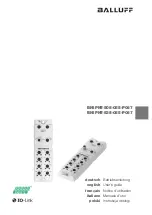
1 - Verifica a vuoto (senza veicoli caricati).
In questa fase occorre verificare in particolare:
·
che i pulsanti di salita, discesa e stazionamento funzionino corretta-
mente;
·
che il ponte raggiunga l’altezza massima;
·
che non vi siano vibrazioni anomale nelle colonne e nei bracci;
·
che i martelletti si inseriscano sotto i riscontri saldati al carrello;
·
che i finecorsa salita intervengano;
·
che gli elettromagneti intervengano;
·
che il finecrsa di discesa arresti I carrelli a 150 mm dal pavimento e
che l’ultimo tratto di discesa sia segnalato dall’avvisatore acustico
salvapiedi;
·
che, dopo aver effettuato i cicli di cui al punto seguente, la differenza
di altezza dei bracci di un carrello rispetto a quelli del carrello oppo-
sto, risulti inferiore a 1 cm; in caso contrario metterli a livello agendo
sui dadi e controdadi delle funi di sincronismo.
Per le verifiche sopracitate effettuare due o tre cicli completi di sa-
lita e discesa anche al fine di spurgare eventuale aria presente nel
circuito idraulico.
2. Prove a carico.
·
Ripetere le prove precedenti con veicolo a bordo.
Dopo le prove a carico effettuare un controllo visivo della
macchina e riverificare il serraggio della bulloneria.
1 - Test (without vehicles loaded).
In this phase check the following:
·
that the up, down and parking push buttons operate correctly;
·
that the rack reaches the maximum height;
·
that there are no abnormal vibrations in the posts and in the arms;
·
that the safety wedges enter the iron pads under the carriage;
·
that the rise limit switches trip;
that the electromagnet trips;
·
that the descent limit switch stops the carriages at 150 mm from the
floor and that the last descent stroke is signalled by the warning buz-
zer;
after having done all as previously recommended, the height difference
between the arms of the two carriages, is less than 1cm. On the con-
trary, adjust their level by working on the counternuts on the synchrono-
us steel cables
.To perform the tests listed above, complete two or three
complete up and down cycles. This is also to be done in order to make
the air in the hydraulic circuit going out.
2. Load tests.
·
Repeat the previous tests with the vehicle on the rack.
After the load tests, visually inspect the machinery and
check again that all bolts are tightened.
60
Summary of Contents for 208I/7
Page 2: ......
Page 20: ...SCHEMI ELETTRICI TRIFASE WIRING DIAGRAMS SCHALTPLAN DREIPHASENSTROM Fig 9 Abb 9 18...
Page 83: ......
Page 84: ...COLONNE E TRAVE SUPERIORE POSTS AND UPPER BEAM...
Page 85: ...CARRELLI E BRACCI CARRIAGES AND ARMS...
Page 86: ...SICUREZZE SAFETY DEVICES...
Page 87: ...QUADRO DI COMANDO CONTROL BOX STEUERTAFEL TABLEAU DE COMMANDE PANEL DE MANDO...
















































